 |
Note it is repeated:Consumer Preferences, Revealed Preferences |
| << CONSUMER PREFERENCES:Budget Constraints, Consumer Choice |
| MARGINAL UTILITY AND CONSUMER CHOICE:COST-OF-LIVING INDEXES >> |
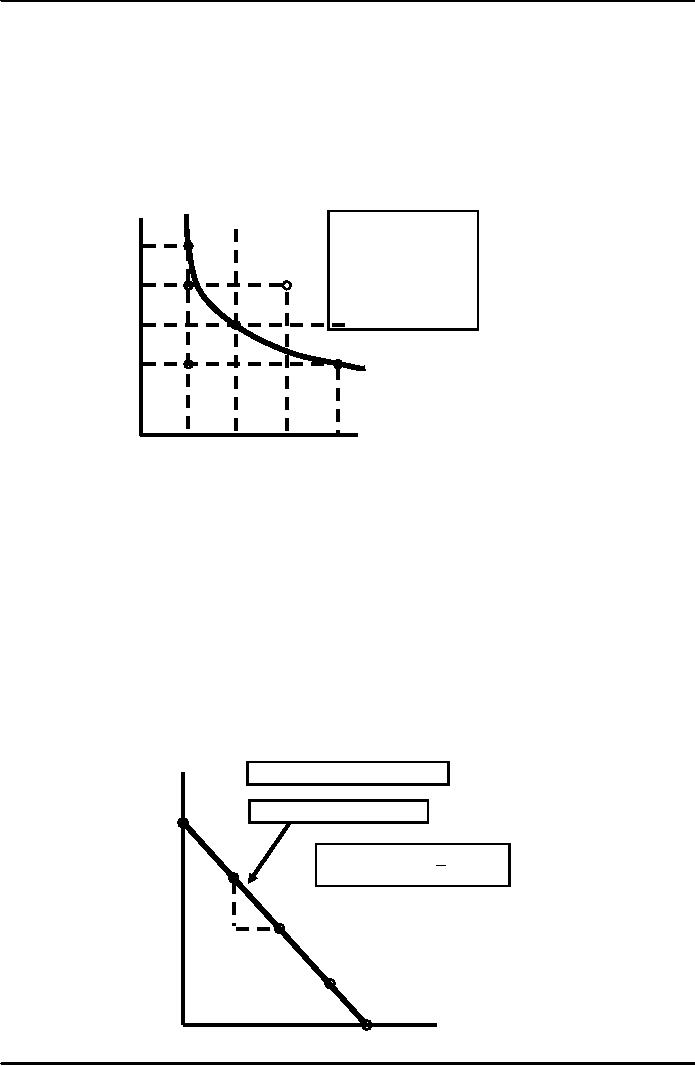
Microeconomics
ECO402
VU
LESSON
8
Note it is
repeated
Consumer
Preferences
Indifference
curves represent
all combinations of market
baskets that provide
the
same
level of satisfaction to a
person.
Consumer
Preferences
Clothing
Combination
B,A,
& D
(units
per week)
yield
the same
B
50
satisfaction
�E
is
preferred to U
H
E
1
40
�U
is
preferred to H
&
1
A
G
30
D
20
U
G
10
Food
10
20
30
40
(units
per week)
Budget
Constraints
The
Budget Line
The
budget line indicates all
combinations of two commodities
for which total
money
spent equals total
income.
The
Budget Line
Let F
equal the amount of food
purchased, and C is the
amount of clothing.
Price of
food = Pf and price of
clothing = Pc
Then Pf F
is the amount of money spent
on food, and PcC is the
amount of
money
spent on clothing.
The
budget line then can be
written:
PFF +
PCC =
I
Clothing
Pc
= $2
Pf =
$1
I
= $80
(units
per
week)
Budget
Line F + 2C = $80
A
(I/PC) = 40
1
B
Slope
=
ΔC/ΔF
= -
=
-
PF/PC
30
2
10
D
20
20
E
10
G
Food
(units
per week)
0
40
60
80
= (I/PF)
20
35
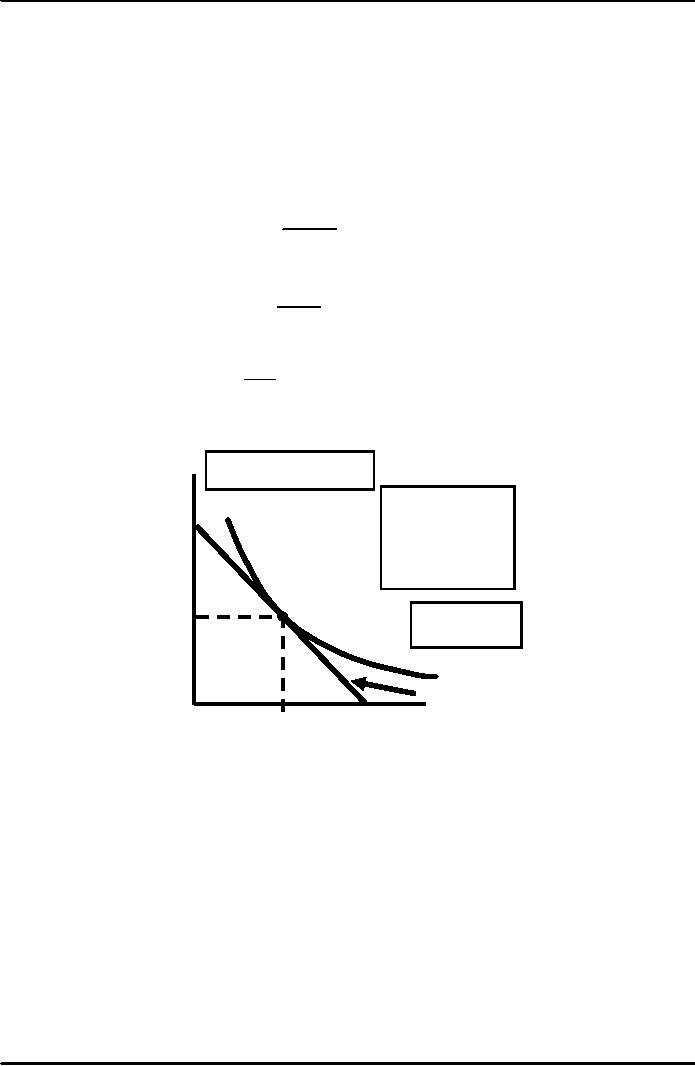
Microeconomics
ECO402
VU
Consumer
Choice
Consumers
choose a combination of goods
that will maximize the
satisfaction they can
achieve,
given the limited budget
available to them.
The
maximizing market basket
must satisfy two
conditions:
1)
It
must be located on the
budget line.
2)
Must
give the consumer the
most preferred combination of
goods and
services.
Recall,
the slope of an indifference
curve is:
Δ C
=
-
MRS
Δ F
Further,
the slope of the budget
line is:
P
F
= -
Slope
P
C
Therefore,
it can be said that
satisfaction is maximized
where:
P F
=
MRS
P C
Pc
= $2
Pf =
$1
I=
Clothing
$80
(units
per
week)
At
market basket A
the
budget line and
40
the
indifference
curve are
tangent
and no higher
level
of satisfaction
30
can
be attained.
A
At
A:
20
MRS
=Pf/Pc =
5
U
Budget
Line
0
20
40
80
Food
(units per
week)
Designing
New Automobiles (II)
Consider
two groups of consumers,
each wishing to spend
$10,000 on the
styling
and performance of
cars.
Each
group has different
preferences.
By
finding the point of
tangency between a group's
indifference curve and
the
budget
constraint auto companies
can design a production and
marketing plan.
36
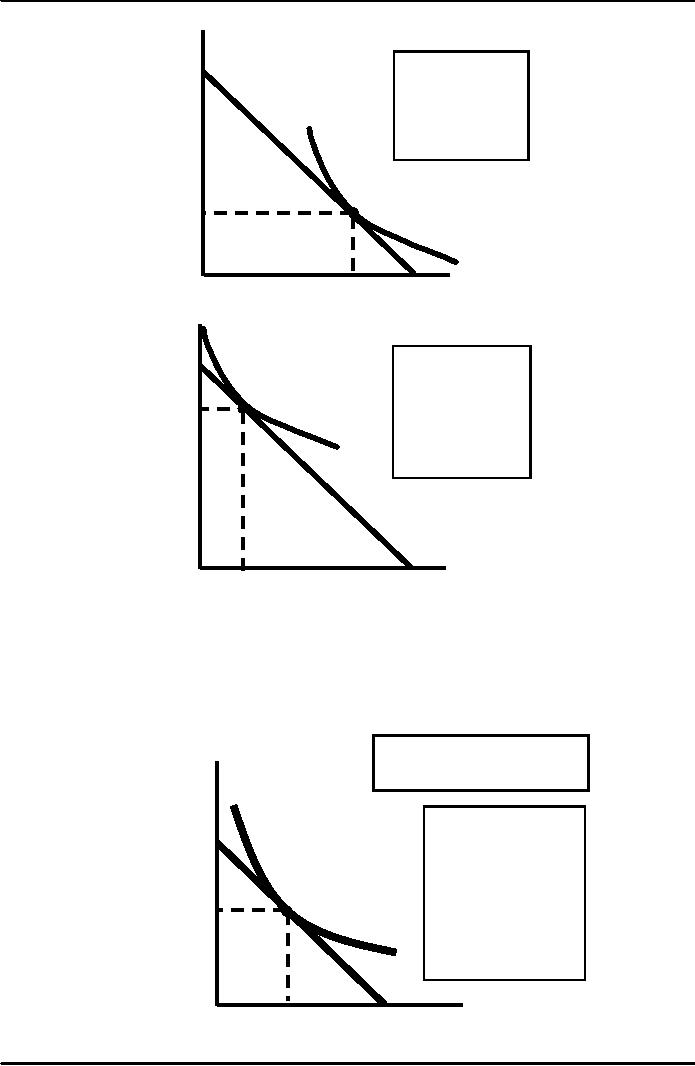
Microeconomics
ECO402
VU
Styling
These
consumers
$10,000
are
willing to trade
off
a considerable
amount
of styling
for
some additional
performance
$3,000
$10,000
Performance
$7,000
Styling
These
consumers
$10,000
are
willing to trade
off
a considerable
amount
of
$7,000
performance
for
some
additional
styling
$10,000
Performance
$3,00
Consumer
Choice
Decision
making & Public
Policy
Choosing
between a non-matching and
matching grant to fund
police
expenditures
Non-matching
Grant
Private
Expenditures
($)
Before
Grant
�
Budget
line: PQ
P
�A:
Preference maximizing
market
basket
�Expenditure
A
R
�OR:
Private
�OS:
Police
U
Police
O
Q
S
Expenditures
($)
37
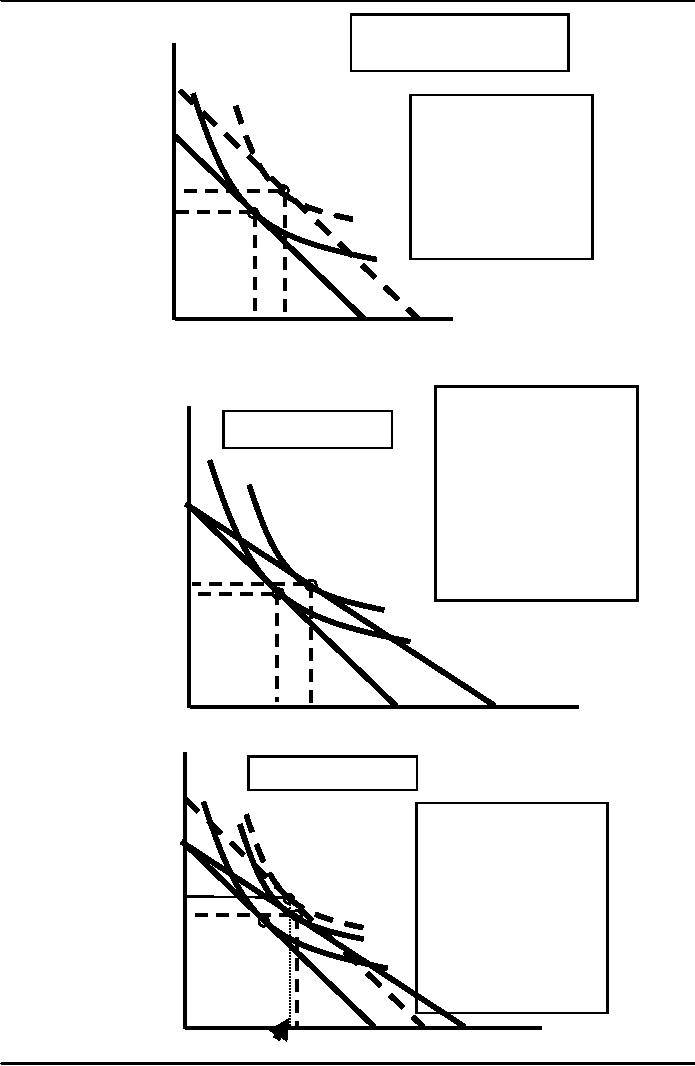
Microeconomics
ECO402
VU
Non-matching
Grant
Private
Expenditures
($)
T
After
Grant
�
Budget
line: TV
P
�B: Preference
maximizing
market
basket
B
U
�Expenditure
A
R
U
�OU:
Private
�OZ:
Police
U
Police
Z
V
O
S
Q
Expenditures
($)
Private
Before
Grant
Expenditures
($)
�
Budget
line: PQ
Matching
Grant
�
A: Preference
maximizing
T
market
basket
After
Grant
�C: Preference
maximizing
P
market
basket
Expenditures
�OW: Private
A
W
�OX: Police
R
C
U2
U1
S
O
Q
R
X
Police
($)
Private
Expenditures
($)
Matching
Grant
T
Non-matching
Grant
�Point B
P
�OU: Private
expenditure
�OZ: Police
expenditure
B
U
Matching
Grant
W
A
U
C
�Point C
U2
�OW: Private
expenditure
U
�OX: Police
expenditure
O
Q
R
Z X
Police
($)
38
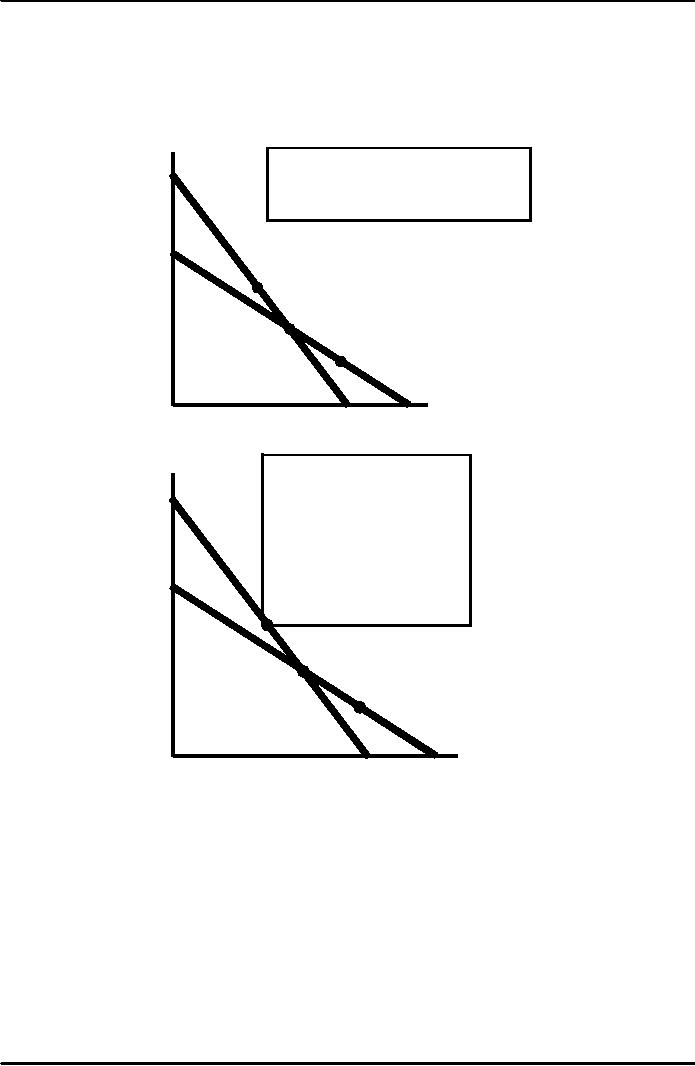
Microeconomics
ECO402
VU
Revealed
Preferences
If
we know the choices a
consumer has made, we can
determine what her
preferences
are
if we have information about a
sufficient number of choices
that are made
when
prices
and incomes vary.
Revealed
Preferences--Two Budget
Lines
I1:
Chose A over B
l1
Clothing
A
is revealed preferred to B
(units
per
l2:
Choose B over D
month)
B
is revealed preferred to D
l
A
B
D
Food
(units per month)
l
Clothing
(units
per
All
market baskets
month)
in
the blue
shaded
area are
preferred
to A.
l
A
B
D
B
is preferred to
all
market baskets
in
the pink area
Food
(units per month)
Revealed
Preferences--Four Budget
Lines
39
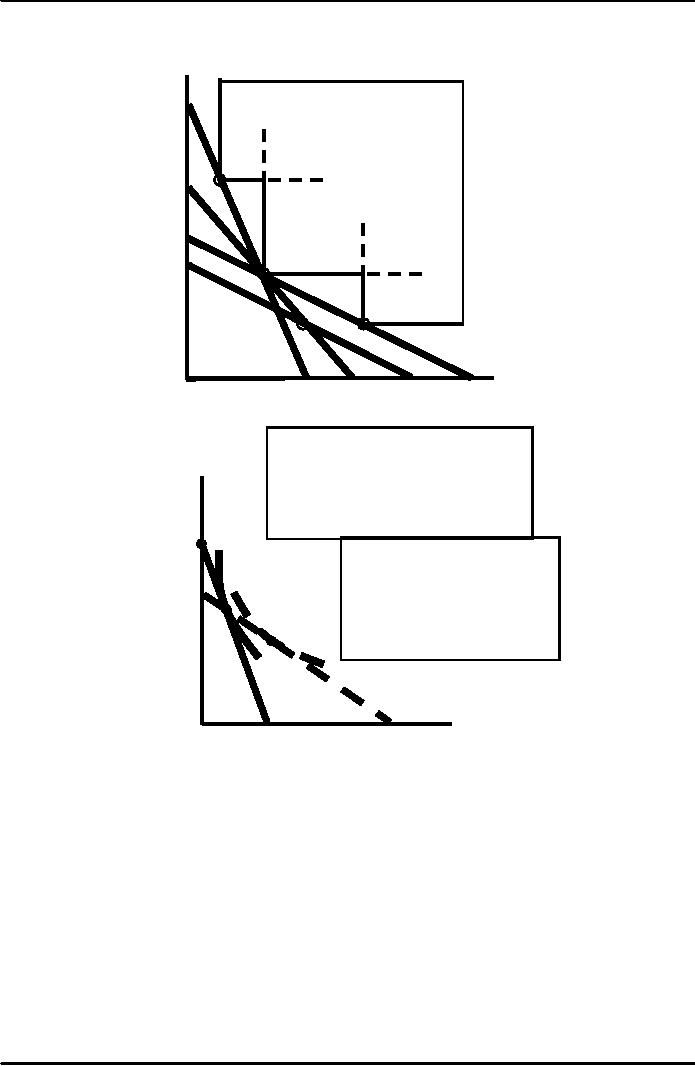
Microeconomics
ECO402
VU
I3: E revealed preferred to
A
Clothing
l3
(units
per
month)
All
market baskets in
the
blue
area preferred to A
E
l1
l4
A
l2
G
B
A:
preferred to all
I4:
G revealed preferred to A
market
baskets in
the
pink area
Food
(units per month)
Scenario
�Roberta's recreation budget
= $100/wk
Other
Recreational
�Price of exercise =
$4/hr/week
Activities
�Exercises 10 hrs/wk at
A
given
U &
I
($)
1
1
100
C
�The rate changes to
$1/hr +
$30/wk
80
�New budget line
I
&
2
60
combination
B
A
B
�Reveal preference of
B
to
A
40
U1
U2
Would
the Club's
profits
increase?
20
l
l
Amount
of Exercise
0
50
75
25
(hours)
40
Table of Contents:
- ECONOMICS:Themes of Microeconomics, Theories and Models
- Economics: Another Perspective, Factors of Production
- REAL VERSUS NOMINAL PRICES:SUPPLY AND DEMAND, The Demand Curve
- Changes in Market Equilibrium:Market for College Education
- Elasticities of supply and demand:The Demand for Gasoline
- Consumer Behavior:Consumer Preferences, Indifference curves
- CONSUMER PREFERENCES:Budget Constraints, Consumer Choice
- Note it is repeated:Consumer Preferences, Revealed Preferences
- MARGINAL UTILITY AND CONSUMER CHOICE:COST-OF-LIVING INDEXES
- Review of Consumer Equilibrium:INDIVIDUAL DEMAND, An Inferior Good
- Income & Substitution Effects:Determining the Market Demand Curve
- The Aggregate Demand For Wheat:NETWORK EXTERNALITIES
- Describing Risk:Unequal Probability Outcomes
- PREFERENCES TOWARD RISK:Risk Premium, Indifference Curve
- PREFERENCES TOWARD RISK:Reducing Risk, The Demand for Risky Assets
- The Technology of Production:Production Function for Food
- Production with Two Variable Inputs:Returns to Scale
- Measuring Cost: Which Costs Matter?:Cost in the Short Run
- A Firm’s Short-Run Costs ($):The Effect of Effluent Fees on Firms’ Input Choices
- Cost in the Long Run:Long-Run Cost with Economies & Diseconomies of Scale
- Production with Two Outputs--Economies of Scope:Cubic Cost Function
- Perfectly Competitive Markets:Choosing Output in Short Run
- A Competitive Firm Incurring Losses:Industry Supply in Short Run
- Elasticity of Market Supply:Producer Surplus for a Market
- Elasticity of Market Supply:Long-Run Competitive Equilibrium
- Elasticity of Market Supply:The Industry’s Long-Run Supply Curve
- Elasticity of Market Supply:Welfare loss if price is held below market-clearing level
- Price Supports:Supply Restrictions, Import Quotas and Tariffs
- The Sugar Quota:The Impact of a Tax or Subsidy, Subsidy
- Perfect Competition:Total, Marginal, and Average Revenue
- Perfect Competition:Effect of Excise Tax on Monopolist
- Monopoly:Elasticity of Demand and Price Markup, Sources of Monopoly Power
- The Social Costs of Monopoly Power:Price Regulation, Monopsony
- Monopsony Power:Pricing With Market Power, Capturing Consumer Surplus
- Monopsony Power:THE ECONOMICS OF COUPONS AND REBATES
- Airline Fares:Elasticities of Demand for Air Travel, The Two-Part Tariff
- Bundling:Consumption Decisions When Products are Bundled
- Bundling:Mixed Versus Pure Bundling, Effects of Advertising
- MONOPOLISTIC COMPETITION:Monopolistic Competition in the Market for Colas and Coffee
- OLIGOPOLY:Duopoly Example, Price Competition
- Competition Versus Collusion:The Prisoners’ Dilemma, Implications of the Prisoners
- COMPETITIVE FACTOR MARKETS:Marginal Revenue Product
- Competitive Factor Markets:The Demand for Jet Fuel
- Equilibrium in a Competitive Factor Market:Labor Market Equilibrium
- Factor Markets with Monopoly Power:Monopoly Power of Sellers of Labor